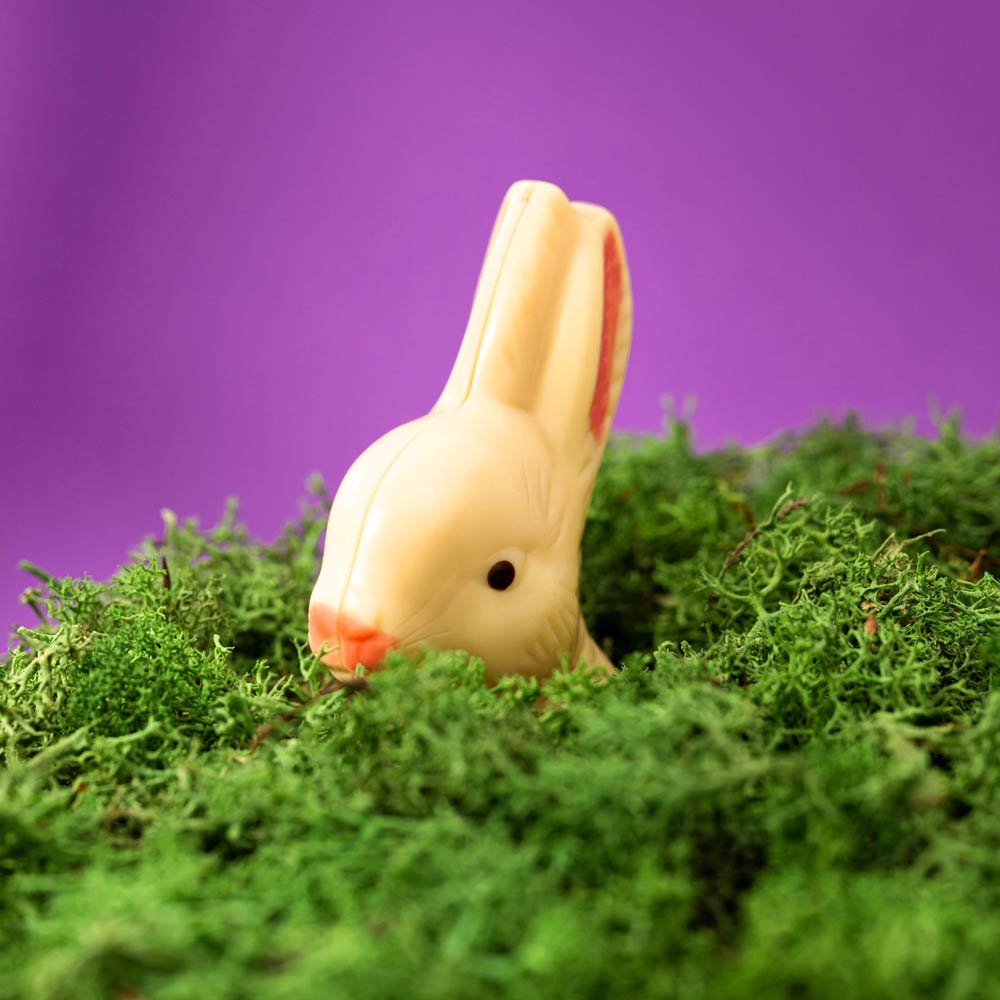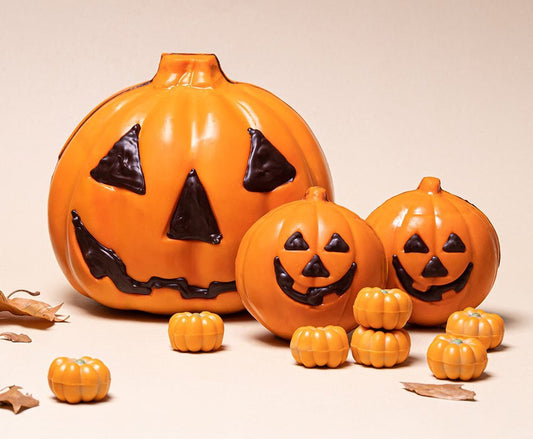Easter Bunny: History and Tradition
Alex ZapataEaster is a holiday filled with symbols and traditions that have evolved over the centuries. One of the most beloved is the Easter Bunny, a figure that over time has become an icon of the celebration and is closely associated with chocolate. But what is the history of the Easter Bunny ? In this article, you'll discover its origin, the different versions of its legend, and how it became the bearer of the exquisite Easter eggs we enjoy today.
What is the origin of the Easter Bunny?
The story of the Easter Bunny has roots in ancient European traditions. The rabbit, an animal associated with fertility and spring, is believed to have appeared as a symbol of rebirth in pagan festivals related to the Germanic goddess Ostara. With the arrival of Christianity, this figure was adopted in the celebration of Easter as a symbol of new life, in tune with the resurrection of Jesus.
It was in the 17th century that the custom of a magic rabbit bringing eggs to children on Easter Eve was first documented. This tradition took hold in Germany and later spread throughout Europe and America. German immigrants brought this custom to the United States in the 19th century, cementing it in popular culture.

Versions of the Easter Bunny story throughout time
The story of the Easter Bunny has varied according to the region and customs of each country. However, in many versions, the bunny is a messenger who, on Easter Eve, hides decorated or chocolate eggs to surprise children.
- In some stories, the rabbit is a kind animal that helps a family in need, leaving colored eggs as a symbol of hope.
- In other versions, the rabbit works all night hiding eggs around the garden for the children to find the next day.
- Some stories even present the rabbit as a servant of the goddess Ostara, who rewards him with the mission of distributing eggs in spring.
The legend of the Easter Bunny in different countries
The evolution of the Easter Bunny legend has given rise to different versions in different countries. In countries like Germany and Switzerland, it is said that a bunny leaves eggs in children's gardens, while in countries like France, the tradition is slightly different, and the eggs are brought by flying bells. In English-speaking countries, the “Easter Bunny” tradition is the best known and is celebrated with large events and festive decorations.

How to explain the Easter Bunny to children?
For little ones, the story of the Easter Bunny is a magical tale that symbolizes joy and fun. It's important to explain that the bunny represents the arrival of spring and the hope of new beginnings. To make the explanation more enjoyable, you can include activities such as a hunt for small chocolate Easter eggs , which will engage children in the tradition in a fun and delightful way.
Why does the Bunny bring Easter eggs?
One of the most striking curiosities about this tradition is: if rabbits don't lay eggs, why does the Easter Bunny bring eggs? In ancient times, eggs were a symbol of rebirth in Christian culture, and during Lent, it was customary to abstain from eating them. With the arrival of Easter, decorated eggs became a special gift. At the end of the 19th century, European chocolatiers began producing decorated eggs made with artisanal chocolate , transforming this tradition into a true delight for both young and old.
Today, the tradition of the Easter Bunny is still very much alive in many parts of the world. Every year, entire families celebrate this special moment with quality sweets and chocolates. At Bombonería Pons , we select the finest ingredients to create artisan chocolates that make each Easter an unforgettable memory. Because the best way to keep the tradition alive is to share sweet moments with those we love most.

Easter Bunny FAQ
What is the origin of the Easter Bunny?
The Easter Bunny has its roots in ancient European traditions. It is believed to originate from spring festivals dedicated to Ostara, the Germanic goddess of fertility and renewal. Over time, this custom merged with the Christian celebration of the Resurrection of Christ , giving rise to the tradition we know today.
Why is it associated with chocolate eggs?
In ancient times, eggs were a symbol of life and rebirth . During Lent, many cultures avoided eating eggs, so when Easter arrived, they were given as a special treat. Over time, chocolates replaced natural eggs, giving rise to the delicious tradition of chocolate eggs and figurines we enjoy today.
How did the Easter Bunny become popular?
In the 18th century, German immigrants brought the tradition of "Osterhase" to the United States. There, children began creating nests for the rabbit to lay colorful eggs. Today, the tradition lives on with the distribution of chocolates and candies shaped like rabbits, especially those handcrafted with high-quality ingredients.





